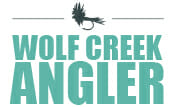Guiding For The Future
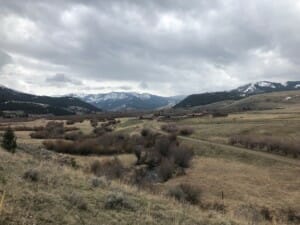
Tom Miner Creek – a classroom like no other
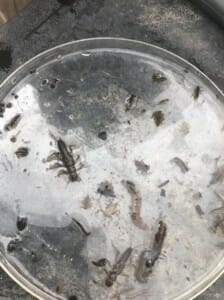
Entomology 101
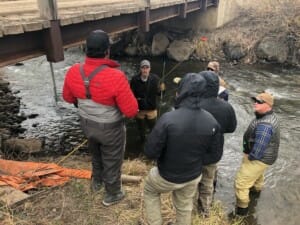
Hydrology 101
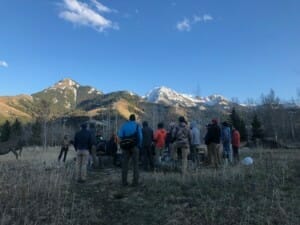
Guide Ethics – Campfire Discussion
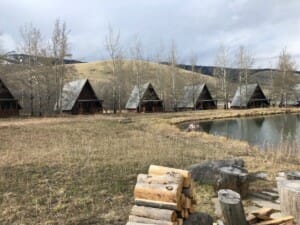
Home away from home at the B Bar Ranch
Last week I had the pleasure of attending the pilot program of Guiding for the Future, an Advanced Guide Training Program established “to inspire dedicated stewardship of aquatic ecosystems while increasing knowledge, professionalism, and ethics of fishing guides, outfitters, and the fly-fishing industry.”
The program came about in part as a reaction to the PKD outbreak which closed down the Yellowstone River during the summer of 2017.
I first heard about G4F in the winter of 2018 while attending a Montana State Council Trout Unlimited meeting in Livingston. Montana TU Executive Director David Brooks mentioned the program to me and asked if he might pass my name along to Brant Oswald and Sean Blaine who were in the early stages of creating the program, as an outfitter and active member of TU who might be interested in participating.
I was intrigued with the concept but also somewhat suspicious of the motives behind it as it seemed very possible that it was simply a ploy to add more regulation to what is already a heavily regulated industry.
Blaine and Oswald presented the concept later that spring at the Fishing Outfitters Association of Montana Annual Meeting. Still somewhat skeptical, I jumped at the chance to participate in the Steering Committee meeting held last April in Craig MT.
It was here we discussed the nuts and bolts of what Guiding for the Future would be and as it became clear to me that the vision was for guides and outfitters in Montana to have the opportunity to separate themselves from the pack through this continuing education program my skepticism turned to optimism as we discussed putting together a program unlike any other out there.
The program would be offered annually by application only and would fill the void in our industry which is met by continuing education in most every other trade or industry. Rather than being just another requirement for a guide or outfitter license like a First Aid/CPR certificate, Guiding for the Future would be an opportunity for a guide or outfitter to separate themselves from the pack by receiving a well-rounded education going well beyond the basics.
Guiding for the Future would not be a guide school. The assumption would be that a guide or outfitter interested in this program would already be an experienced guide or outfitter looking to take things to the next level. The course would consist of an On-line curriculum followed by a three-day practicum to give students hands on training in the field.
In March this year the program was announced via FOAM and those interested were invited to apply. One look at the curriculum and I was sold.
Online coursed included;
– A History of Fish and Wildlife Conservation in the United States
– Laws and Regulations
– Hydrology and River Ecology
– Entomology
– Fish Ecology
– Water Users and Challenges
– Guides as Stewards
– Beyond Flies and Drifts
Happily, I was accepted into the Pilot Program and delving in to that first online module I was pleasantly surprised by the scope and depth of the material.
With just a few weeks to complete the online portion of the course time constraints were a challenge, though a challenge is exactly what I had hoped Guiding for the Future would be.
Last week we were invited to the B Bar Ranch in Tom Miner Basin near Gardiner for the 3 day practicum which included both classroom and field instruction.
This portion of the course had me out of my comfort zone but it didn’t take long to settle in. A few familiar faces and a bunch of new ones made for an awesome opportunity to network with others in our industry and after a couple of days of sharing the classroom and the dinner table with these folks it soon evolved into a very comfortable and friendly setting.
Standing high above Tom Miner creek observing the glacially carved valley through which the creek flows the significance of the Guiding for the Future program couldn’t have been more evident. While a group of us discussed hydrology and stream morphology a group of students waded into the stream below us, overturning rocks in search of the nymphs that provide forage for the trout we chase. Still another group stood on the bank of the creek near a head gate of an irrigation diversion listening to a surface water hydrologist from DNRC explain how stream flows are calculated, bringing life to those graphs and numbers we follow so closely all year long.
Back in the classroom, topics ranged from candid discussions with an FWP Warden Captain regarding laws and regulations governing our industry to leveraging our role as outdoor industry professionals to advocate during public comment opportunities.
An in-depth look at water rights in Montana was a highlight of the program for me but I also very much enjoyed a look at fish biology and ecology and the role required of us as guides and outfitters and as stewards of this resource.
Risk assessment and CPR training kept us grounded in the realities of having clients in our charge every day and the absolute necessity of being proactive when it comes to client safety and health and field work with Yellowstone Ecological Research Center taught us how we, as guides, can play a direct role in monitoring stream health through water sampling.
This was not nail knots and casting clinics (although there was some of that as well). This was big picture education on a broad range of topics which I believe are of vital interest to all of us who work in this industry.
As G4F proclaims… Montana’s rivers are undergoing increased demands for water, recreation, and environmental services. These demands, in the face of increased periods of drought and other stressors, impact the rivers’ resilience and fisheries, while also translating into increased potential for conflict among users. In response, Guiding for the Future (G4F) is part of a new continuing education program led by the Fishing Outfitters Association of Montana (FOAM) that provides advanced levels of knowledge and skill development for professional fishing outfitters and guides throughout the state.
To me it’s a No Brainer and the general consensus amongst those of us who participated is that we hope G4F certification eventually becomes the norm, rather than the exception.
When you see this sticker on your guide’s boat you can rest assured that you are with a guide who not only cares about putting you on fish but who has also gone the extra mile to provide you with a safer, richer experience that goes far beyond flies and drifts.
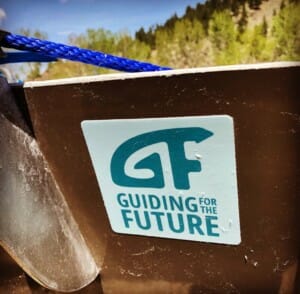
At Wolf Creek Angler we’re Guiding for the Future
And while the fishing is, and should always be, the primary focus, wouldn’t it be nice to go deeper? Wouldn’t it be nice to be able to talk with your guide about how rivers work, how water rights work, how conservation has evolved, how the life cycle of different bugs has a bearing on the fishing day etc. all the while having the confidence in your guide’s knowledge of the rules and regulations AND knowing they have the skills to respond in an emergency if called upon?
We hope and expect that this program will gain popularity not only amongst guides and outfitters but also amongst our clients. Keep an eye out for the G4F logo in sticker form on your guide’s boat or on the website of your favorite outfitter or fly shop and know that when you fish with those who have gone through this certification program you are fishing with individuals who take their profession very seriously and who have gone the extra mile to better themselves and the industry as a whole through advanced education and training.
There is nothing else like this in the country right now and I for one feel privileged to have been a part of the pilot program and I plan on doing whatever I can to contribute to the program in the future.
